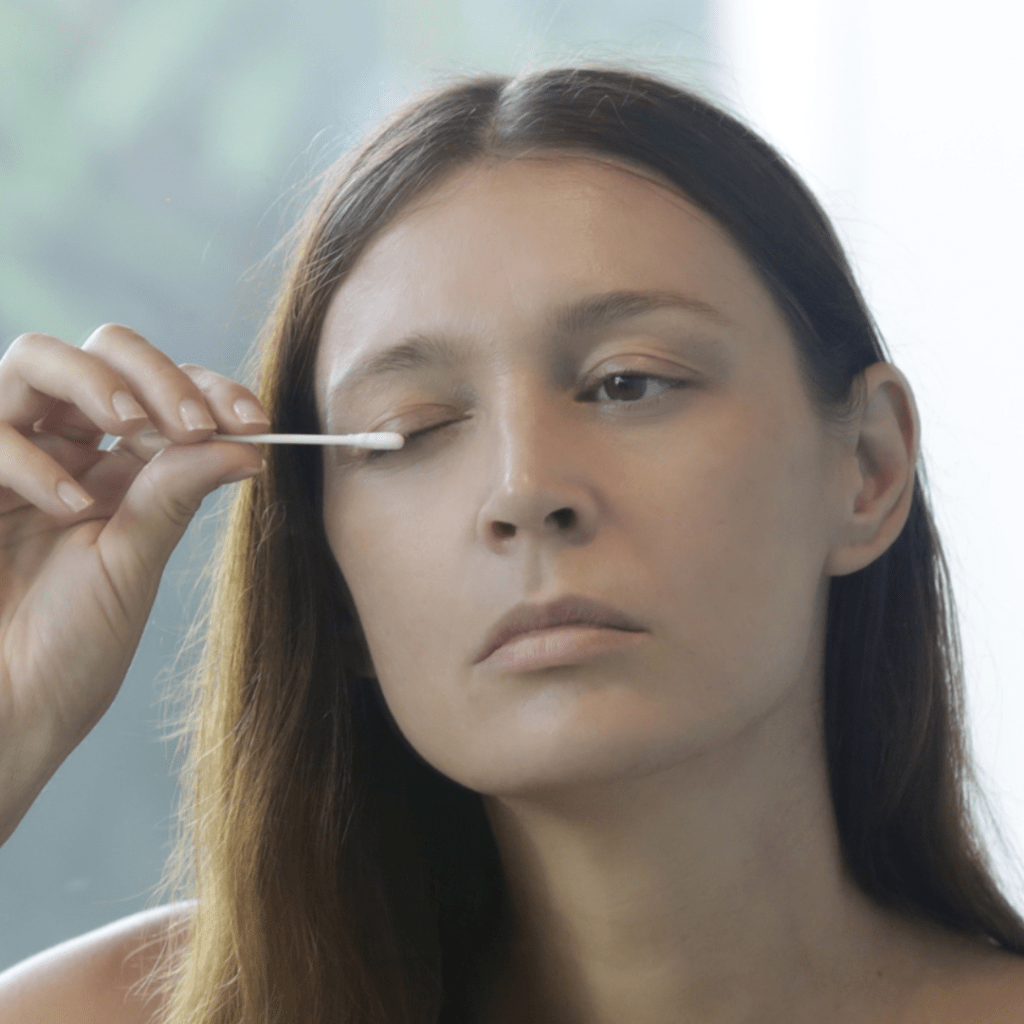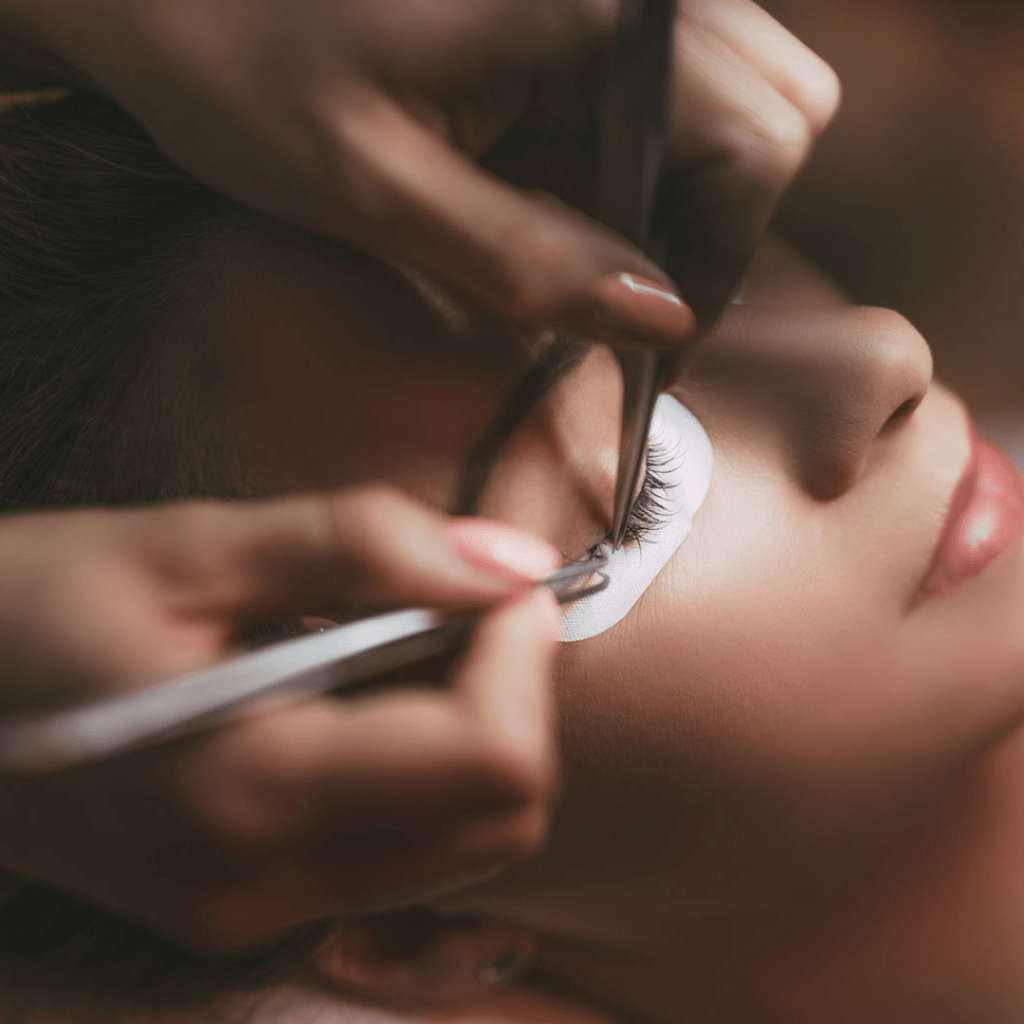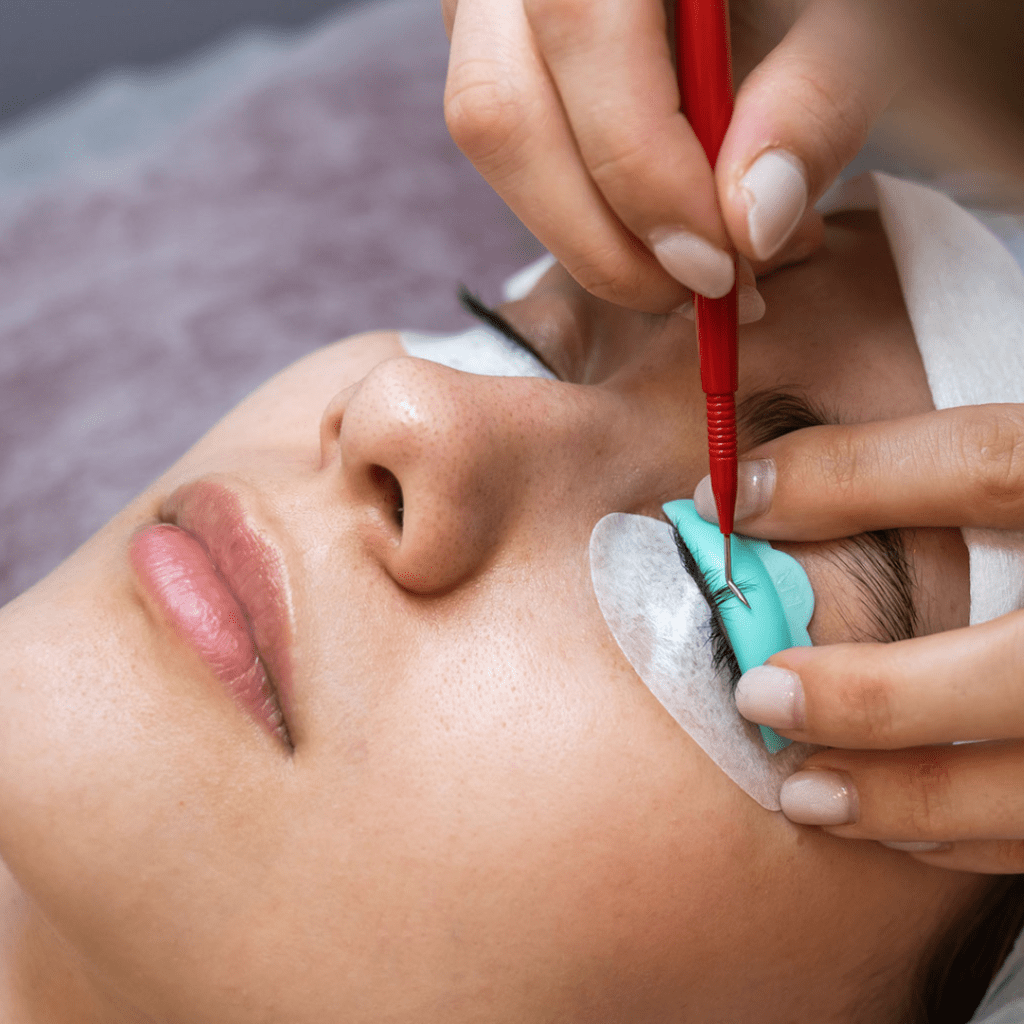Who doesn’t want a lovely pair of eyelashes? Some of us even have envy for people who have naturally long and curly lashes. Now that there are so many lash products available, everyone can now realize their dream of having gorgeous eyelashes. What choices do we have, and what are the advantages and disadvantages of each? Let’s take a look.
THE LASH CYCLE:
The lash cycle consists of 3 stages:
- Anagen phase also known as the growth phase: It lasts between 1-2 months. The longer the anagen phase the more prolonged the lash grows.
- Catagen or degeneration phase: This is the phase when the hair follicles start shrinking. This phase lasts for around 15 days.
- Telogen or resting phase: This phase lasts for 4-9 months. During this phase, the new lash begins to grow in the follicle, while the old one stays dormant. The old lash then sheds, and the cycle repeats with a fresh lash in the anagen phase.
1. Lash serum for eyelash growth:

Currently, there is only one FDA-approved eyelash serum that helps grow eyelashes. It’s Latisse.
Bimatoprost, the active ingredient in Latisse, is a prostaglandin analog. The original use of this treatment was in glaucoma management by reducing the intraocular pressure.
Bimatoprost acts by lengthening the anagen and increasing the percentage of lash follicles in it.
Additionally, bimatoprost appears to be able to stimulate melanogenesis, which most likely explains the variations in eyelash pigmentation seen after use.
Bimatoprost’s impact on eyelashes may last for up to four weeks after treatment.
Side effects
- The iris darkens, making brown eyes appear dark brown or hazel eyes appear browner.
- Darkening of the eyelids
- Allergic response characterized by itchiness and redness
- Rare side effects include macular edema and uveitis, or eye inflammation.
2. Lash serum for eyelash enhancement:
The only serum that claims to promote eyelash growth is Lattise or ones that have other prostaglandin analogs. The other serums, which have fewer side effects, can be used to enhance the look of eyelashes rather than grow the lashes. This is accomplished either by making them appear thicker or by strengthening them to stop their loss. The active ingredient in these serums are:
- Vitamin E:
- Castor oil
- Coconut oil
- Peptides
- Biotin
- Arginine oil
VITAMIN E
Tocopherol is another name for vitamin E. The Greek word “tocos” means offspring and “phero” means to bring forth.
Vitamin E nourishes and strengthens lashes because of its potent antioxidant properties.
While vitamin E does not seem to lengthen lashes, its anti-inflammatory and anti-aging properties may prolong the anagen phase or delay the catagen phase, resulting in thicker, more enhanced eyelashes.
CASTOR OIL
Ricinoleic acid makes up 90% of castor oil. Ricinoleic acid contains high levels of triglycerides, which may help to moisturise eyelashes.
The oil also has omega-6 fatty acids, which are good for the health of the hair.
Castor oil is a humectant, which means it draws a lot of water into the eyelashes and thickens them, giving them a fuller appearance that boosts their appearance. As with vitamin E, no studies have been conducted to prove that castor oil lengthens lashes.
Before using castor oil on the lashes, it is advisable to perform a 24-hour patch test because it is a recognized allergen and can cause skin irritation. Castor oil, like vitamin E, has not been proven to lengthen eyelashes.
It can cause burning, inflammation, and watering in the eye, so take care not to let it get inside the eye.
COCONUT OIL
Although coconut oil promotes hair development, can it also lengthen eyelashes? According to research coconut oil includes fatty acids, primarily lauric acid and thus has a strong affinity for hair proteins. Because of its low molecular weight and straight linear chain coconut oil can easily enter the hair shaft.
This could be the reason why coconut oil seems to offer better and more enduring protection than other oils.
Applying coconut oil on the skin surrounding your eyes and your eyelashes may help prevent skin infections and inflammation of the hair follicles. Coconut oil also hydrates and shields hair against deterioration and protein loss. This could lead to less eyelash loss, making the lashes appear thicker and fuller.
While using 100% organic virgin coconut oil on the skin and around the eyes is typically safe, you should still take precautions to avoid getting it in your eyes.
PEPTIDES
Peptides are chains of amino acids that are the building block of proteins. Proteins comprise the eyelashes, so feeding them peptides will make them thick and lush, but not grow them.
BIOTIN
Vitamin B7, biotin, aids in the production of keratin. Hair is made up of keratin. Thus, biotin acts as lash food, allowing them to grow to their fullest potential while delaying breakdown.
ARGON OIL
One of the primary causes of hair loss is free radical harm. Known to reduce oxidative stress on skin and hair, argan oil contains high levels of vitamin E and other powerful anti-inflammatory and antioxidant compounds. Not only does argon oil reduces hair loss, but it also has incredible moisturizing qualities, both of which support preserving the health of the lashes.
3. EYELASH EXTENSIONS

The purpose of eyelash extensions is to lengthen, fill up, and darken the eyelashes by gluing semi-permanent fibers to each eyelash.
Materials:
Lash extensions can be created from silk, synthetic, mink, or faux-mink fibres.
Glue:
Cyanoacrylate glue, which has good adhesion properties and dries quickly, is typically used to fix extensions. The glue emits formaldehyde fumes when it comes into contact with moisture in the air. These vapors can irritate, burn, and cause discomfort in the eyes. As a result, those with sensitive eyes should use a glue that emits fewer fumes.
How long does the extensions last?
Because each extension is attached to a single lash, it will naturally fall out when the lash sheds. Lash extensions should last up to a month if one is not accelerating the shedding process by rubbing eyes, using mascara, or weakening the glue with oily eye creams.
Side effects:
1. Irritation:
The problem with eyelash extensions is eye discomfort. The eyes are extremely sensitive to the chemicals used in the glue to adhere eyelash extensions to the natural lash.
2. Damage to the natural lashes:
The weight of the extensions must be supported by the natural lash. In addition, as the natural lashes grow longer, the gap between the extensions and the root of the lash widens. Because of this, it will be more difficult for the natural lashes to hold the weight of the extension, which could lead to breaking. Rubbing the eyes and irritation from an extension may also lead to an early loss.
3. Uneven fallout:
Because the lashes are growing at different rates at any given time, some are currently in a growth phase while others are about to shed. This implies that some extensions will fall out as lashes shed while others stay in place.
4. Short, thin eyelashes:
Natural lashes appear short and thin after extensions come off. Either the brain is used to seeing extended lashes or the extensions have caused some harm.
4. LASH LIFT:

The lash lift is a less expensive and low-maintenance alternative to expert lash extensions. The term “lash lift” refers to an eyelash perm.
A perming lotion is applied upward from the roots of the natural lashes to lift and lengthen them while curling them over a silicone rod.
The solution is carefully removed from the lashes after some time, and the lash form is maintained with a setting or neutralizing lotion.
The final step is to apply a nourishing lotion to replenish the lashes’ moisture.
Side effect: The lotion used in perming and neutralizing are chemicals that can cause skin irritation on coming in contact with it.
QUICK SUMMARY;
The prostaglandin-containing lash serum is the only one that will promote eyelash growth. Other eyelash serum work by making the lashes stronger and thicker. For longer lashes, there are also professional solutions like lash lifts and extensions. Always clean the lashes and eyelids properly before going for any of these options to avoid eyelid infection, inflammation and, blepharitis. Do your research and only visit licensed, experienced aestheticians.
